A smooth wedge A is fitted in a chamber hanging from a fixed ceiling near the earth's surface.A block B placed at the top of the wedge takes a time T to side down the length of the wedge. If the block is placed at the top of the wedge and the cable supporting the chamber is broken at the same instant, the block will
take a time longer than T to slide down the wedge
take a time shorter than T to slide down the wedge
remain at the top of the wedge
jumb off the wedge
The correct Answer is:C
To solve the problem, we need to analyze the situation when the cable supporting the chamber is broken. Here's a step-by-step breakdown of the solution:
Step 1: Understand the Initial Condition
Initially, the block B is placed on top of the wedge A, and it takes time T to slide down the wedge due to the gravitational force acting on it. The wedge is smooth, which means there is no friction between the block and the wedge.
Hint: Consider the forces acting on the block when it is sliding down the wedge.
Step 2: Analyze the Situation When the Cable is Cut
When the cable supporting the chamber is cut, both the wedge and the block will start to fall freely under the influence of gravity. This means that both the block and the wedge are in free fall.
Hint: Think about how free fall affects the forces acting on the block and the wedge.
Step 3: Determine the Effect of Free Fall on the Block
In free fall, both the block and the wedge experience the same acceleration due to gravity (g). Since they are both falling at the same rate, there is no relative motion between the block and the wedge. The gravitational force acting on the block does not create any additional force that would cause it to slide down the wedge.
Hint: Recall that relative motion depends on the presence of a net force acting between two objects.
Step 4: Conclusion
Since there is no relative force acting on the block with respect to the wedge during free fall, the block will not slide down the wedge. Instead, it will remain at the top of the wedge.
Final Answer: The block will remain at the top of the wedge.
Summary of Steps
1. Understand the initial condition where the block slides down the wedge.
2. Analyze the situation when the cable is cut, leading to free fall.
3. Determine the effect of free fall on the block and wedge.
4. Conclude that the block remains at the top of the wedge.
Initially, the block B is placed on top of the wedge A, and it takes time T to slide down the wedge due to the gravitational force acting on it. The wedge is smooth, which means there is no friction between the block and the wedge.
When the cable supporting the chamber is cut, both the wedge and the block will start to fall freely under the influence of gravity. This means that both the block and the wedge are in free fall.
In free fall, both the block and the wedge experience the same acceleration due to gravity (g). Since they are both falling at the same rate, there is no relative motion between the block and the wedge. The gravitational force acting on the block does not create any additional force that would cause it to slide down the wedge.
Since there is no relative force acting on the block with respect to the wedge during free fall, the block will not slide down the wedge. Instead, it will remain at the top of the wedge.
1. Understand the initial condition where the block slides down the wedge.
2. Analyze the situation when the cable is cut, leading to free fall.
3. Determine the effect of free fall on the block and wedge.
4. Conclude that the block remains at the top of the wedge.
Topper's Solved these Questions
- NEWTON'S LAWS OF MOTIONBOOK - HC VERMA ENGLISHCHAPTER - NEWTON'S LAWS OF MOTIONEXERCISE - Objective -2
9 Videos
- NEWTON'S LAWS OF MOTIONBOOK - HC VERMA ENGLISHCHAPTER - NEWTON'S LAWS OF MOTIONEXERCISE - Exercises
42 Videos
- NEWTON'S LAWS OF MOTIONBOOK - HC VERMA ENGLISHCHAPTER - NEWTON'S LAWS OF MOTIONEXERCISE - worked out Examples
11 Videos
- LAWS OF THERMODYNAMICSBOOK - HC VERMA ENGLISHCHAPTER - LAWS OF THERMODYNAMICSEXERCISE - All Questions
64 Videos
- PHYSICS AND MATHEMATICSBOOK - HC VERMA ENGLISHCHAPTER - PHYSICS AND MATHEMATICSEXERCISE - Question for short Answer
14 Videos
Similar Questions
In figure, the pulley shown is smooth. The spring and the string are light. Block B slides down from the top along the fixed rough wedge of inclination θ. Assuming that the block reaches the end of the wedge, find the speed of the block at the end. Take the coefficient of friction between the block and the wedge to be μ and that the spring was relaxed when the block was released from the top of the wedge.

View SolutionA wedge shaped block A' of mass M is at rest on a smooth horizontal surface. A small block 'B' of mass 'm' placed at the top edge of inclined plane of length 'l' as shown in the figure. By the time, the block 'B' reaches the bottom end, the wedge A moves a distance of:

View SolutionA block of mass m is placed on the inclined sufrace of a wedge as shown in fig. Calculate the acceleration of the wedge and the block when the block is released. Assume all surfaces are frictionless.
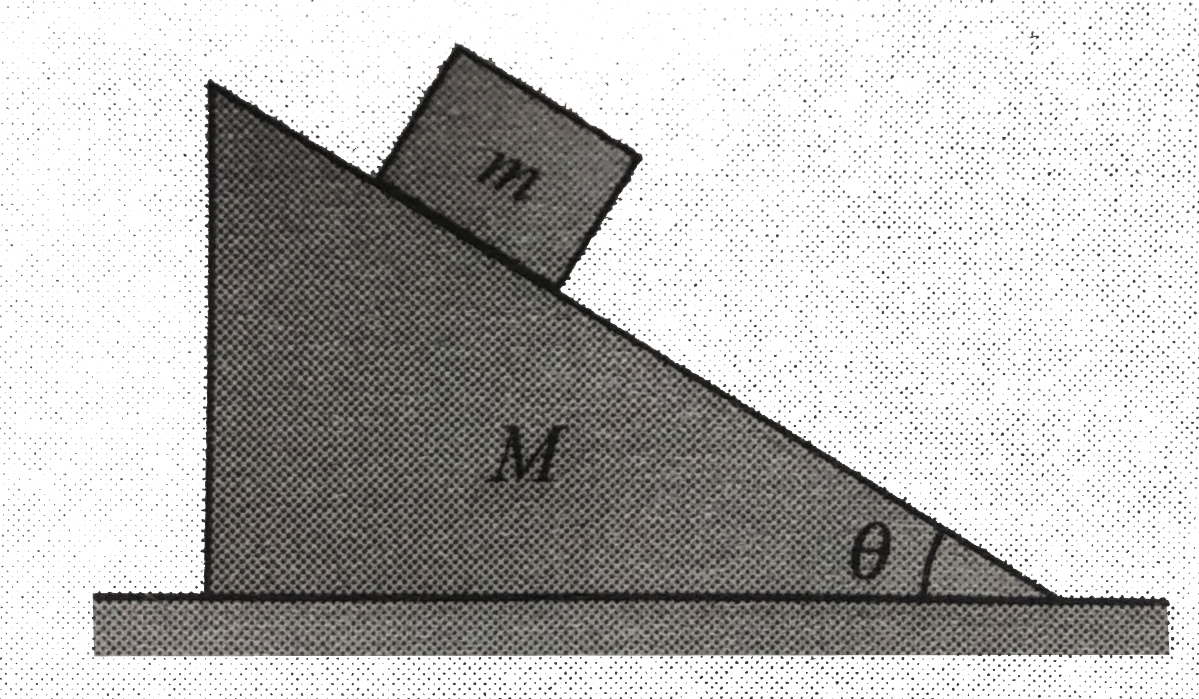
View SolutionAll surfaces shown in figure are smooth. Find velocity of wedge (of mass M) when the block (of mass m) reaches the bottom of the wedge.
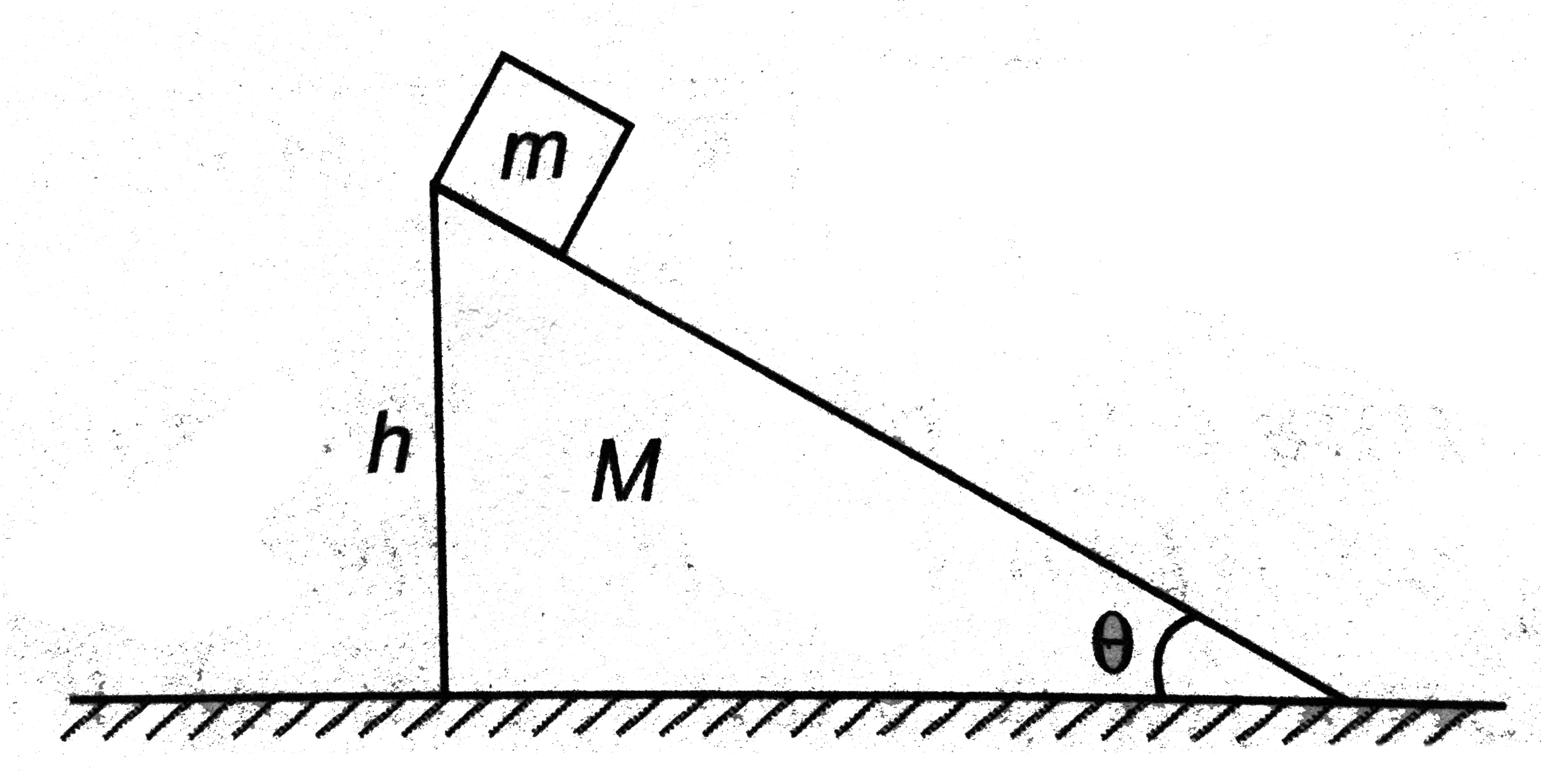
View SolutionA block of mass 'M' is placed on the top of a wedge of mass '4M'. All the surfaces are frictionless. The system is released from rest. The distance moved by the wedge at the instant, the block reaches the bottom will be

View SolutionA block of mass m is placed on a smooth wedge of incination θ. The whole system s acelerated horizontally so tht the block does not slip on the wedge. The force exerted by the wedge on the block has a magnitude
View SolutionA block of mass m is placed on a smooth wedge of mass M, as shown in the figure . Just after placiing block m over wedge M.
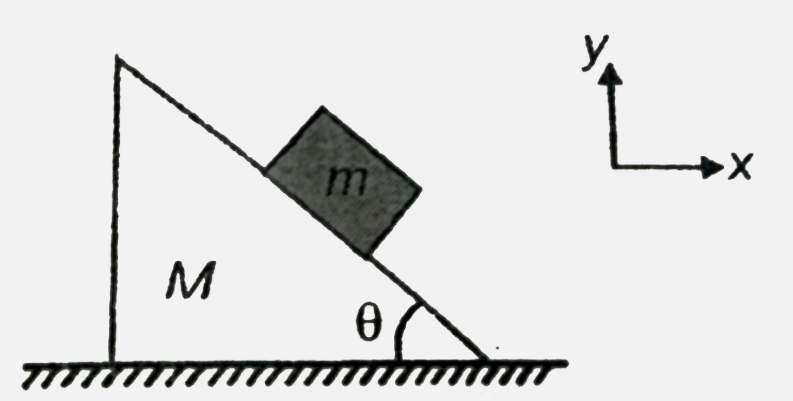
View SolutionA block of mass m is released from the top of a wedge of mass M as shown in figure. Find the displacement of wedges on the horizontal ground when the block reaches the bottom of the wedges. Neglect friction everywhere.
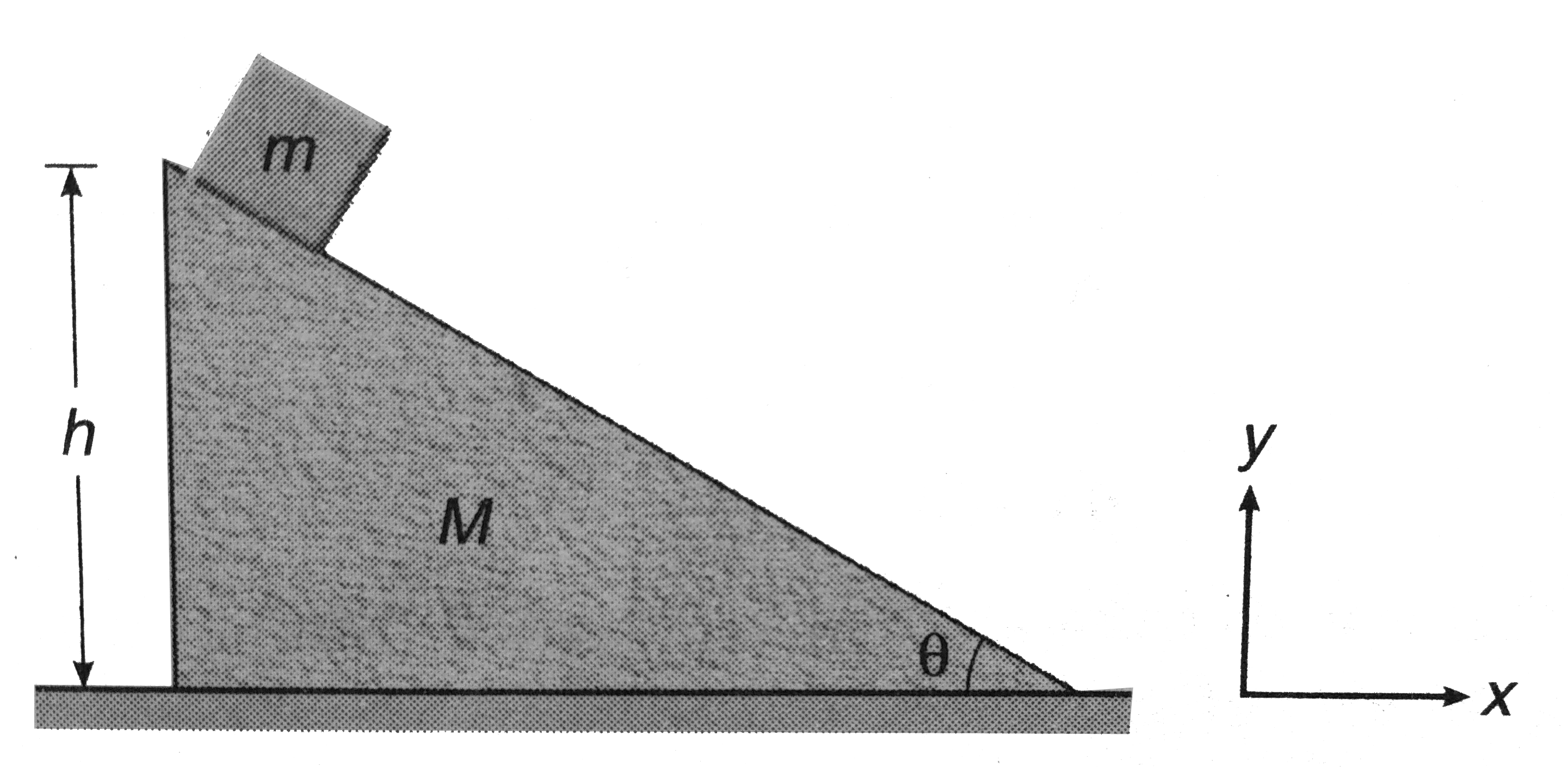
View Solution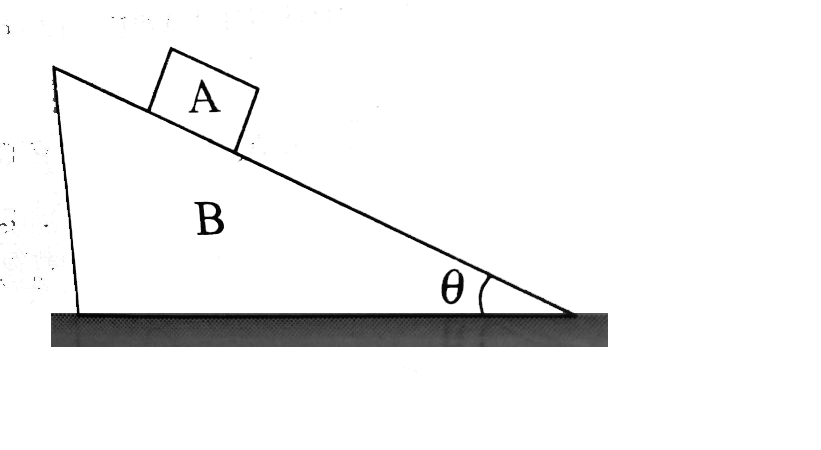
A block is placed on a smooth wedge of inclination angle θ with the horizontal. What minimum acceleration should be given to the wedge in the horizontal direction so that the block starts moving up along the incline?
View SolutionA block of mass 2kg slides down the face of a smooth 45∘ wedge of mass 9kg as shown in the figure. The wedge is placed on a frictionless horizontal surface. Determine the acceleration of the wedge.
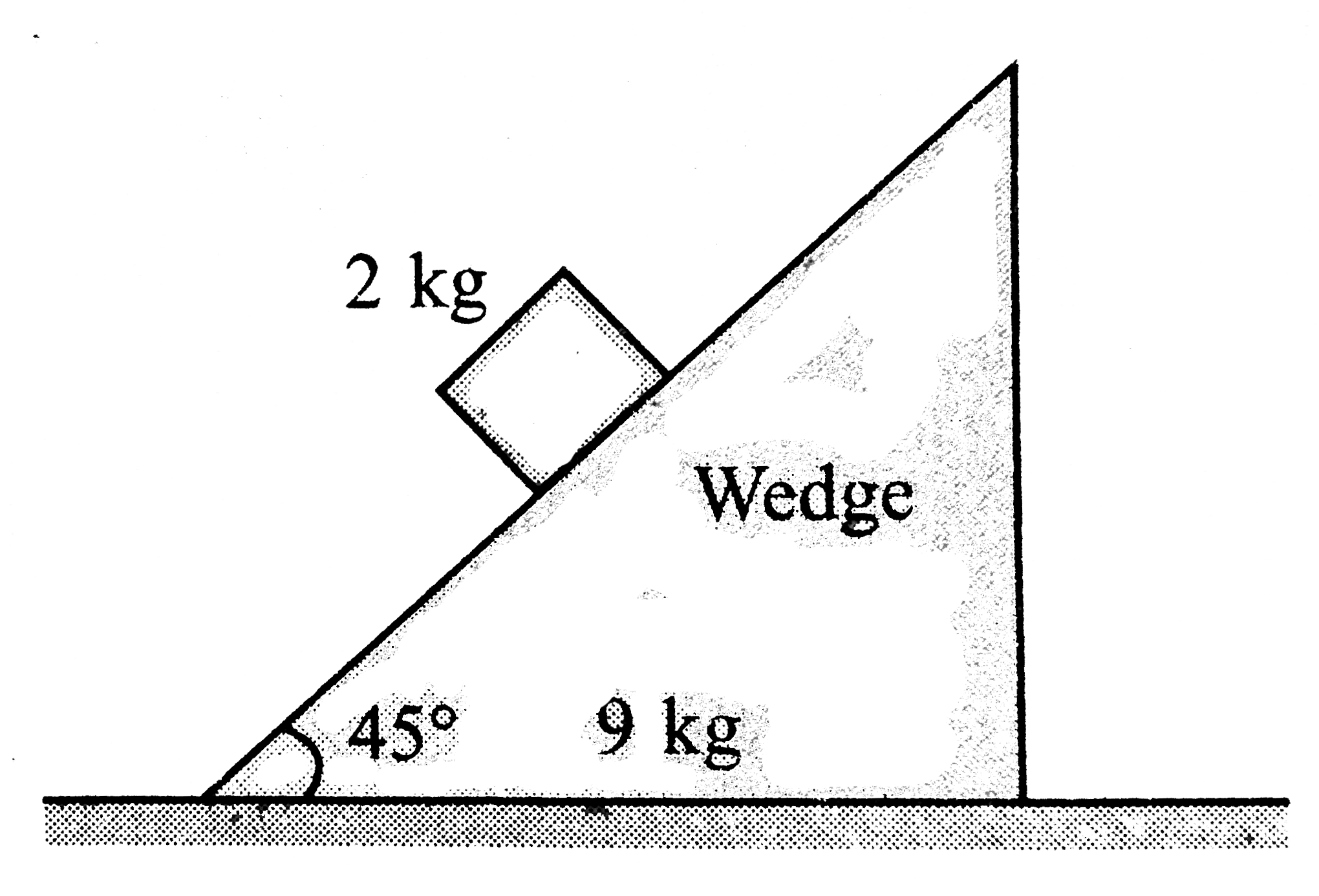
View Solution
